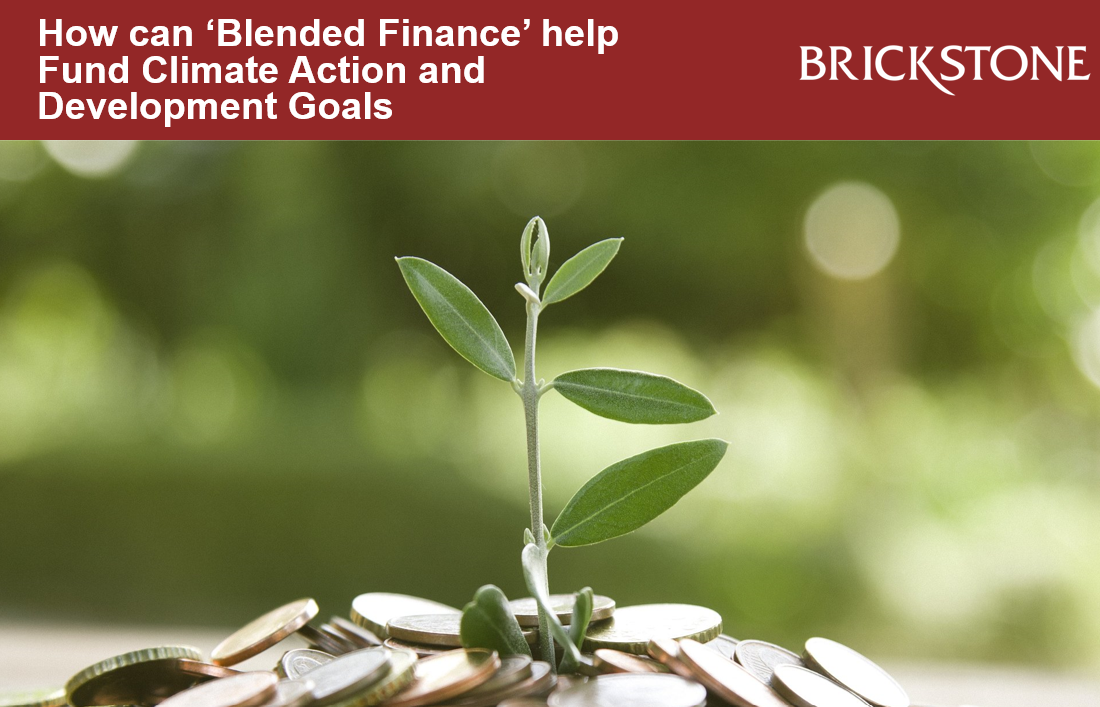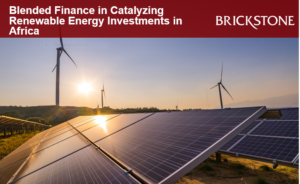How can ‘Blended Finance’ help Fund Climate Action and Development Goals?
Blended Finance Investment
According to the IMF, emerging markets and developing economies account for two-thirds of global greenhouse gas emissions, and many are highly vulnerable to climate hazards. These economies will need enormous financing in coming years to reduce emissions and adapt to the physical effects of climate change.
For instance, the World bank asserts that even with the right policy environment, low-carbon and climate-resilient infrastructure in low- and middle-income countries could require investments of around $1.6 trillion annually from now to 2030, or 4.5% of their GDP.
To achieve this, climate change experts have proffered that the mobilization of private capital on a large scale will be key to achieving their climate objectives as financial markets and public capital alone can’t do the job. Blended Finance is a strategic structuring approach, if fully optimised, will aid the realization of this goal.
This article by Brickstone, reviews the institutional publications and reports on how blended finance can facilitate funding climate action and development goals.
What is Blended Finance?
Blended finance, a strategic approach which has grown in the past decade, allows the use of development finance or philanthropic funds for the mobilisation of private capital flows towards sustainable development in developing countries.
It has helped contribute to faster economic growth in such countries, complementing their own investments and ODA inflows to fill their Sustainable Development Goals (SDG) financing gap, and supporting the implementation of the Paris Agreement.
The Word Bank asserts that blended finance has represented an aggregated financing of over $160 billion, with annual capital flows averaging approximately $9 billion since 2015. Similarly, it has achieved notable success in Sub-Saharan Africa, attracting 61% of global concessional financing in 2020.
Private capital flows to low- and middle-income countries are often constrained by investors’ unfavourable perceptions of risk (actual or perceived). The risks of investing in emerging markets range from macro-financial risks (e.g. currency and inflation risk, credit risk) to political and regulatory risks (e.g. laws around investor protection, protection of property rights, unstable legal environments), to technical risks, which are particularly important in large-scale infrastructure projects (e.g. time and cost overruns). The public or philanthropic capital employed in blended finance transactions provides a buffer to such risks, making the investment more attractive to private commercial investors, thereby drawing in private capital that would otherwise not have been available – including finance for achieving climate goals and the Sustainable Development Goals (SDGs).
The success of blended finance rests critically on the ability to maximise additionality, both in terms of the financial resources mobilised and the developmental impact created, while minimising concessionality, i.e. providing public capital at as close to market conditions as possible.
Blended Finance in Climate Action and Development Goals
According to LSE, progress on achieving the 17 Sustainable Development Goals, including SDG 13 on climate action, remains insufficient.
In 2015 the annual shortfall in the finance required was US$2.5 trillion and by 2022 this had increased to US$4 trillion. For comparison, in 2021 US$178.9 billion of foreign aid was provided by members of the OECD Development Assistance Committee.
Raising the finance to meet climate goals is particularly difficult for low- and middle-income countries. Developed countries committed to channeling US$100 billion per year to developing countries in 2009 but have so far failed to deliver on this promise. This gap in funding climate action is growing: a report published ahead of COP27 suggested that the investment needs for climate action alone in emerging markets and developing countries (other than China) total US$1 trillion per year.
The political nature of development assistance and the budgetary implications for donor countries mean that these financing gaps cannot be closed through increased aid alone. In international fora such as the G20, UN institutions, the Organisation for Economic Co-operation and Development and the International Energy Agency, as well as in development finance institutions (DFIs), ‘blended finance’ is viewed as a promising tool to bridge the SDG and climate financing gaps by mobilising private sector investment.
Read more here.






